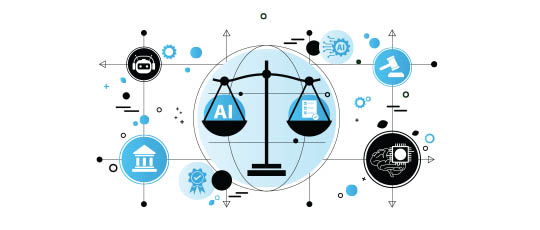For WorldatWork Members
- Total Rewards Model: A Guide, tool
- Takeover or Transformation? How AI Is Reshaping Jobs, the Workforce, Workspan Magazine article
- How AI is Changing Total Rewards Functions and Roles, Workspan Magazine article
- 5 Minutes With ... Gordon Frost, Mercer’s Global Rewards Solution Leader, Workspan Magazine article
For Everyone
- Traditional Job Architecture Career Streams Collide with Modern Work, Workspan Daily article
- Critical Considerations for Crafting an Effective Job Architecture, Workspan Daily article
- A Framework for Fair and Consistent Pay Decisions, Workspan Daily article
- 5 Ways Comp Pros Can Maximize Their Market Management Tool, Workspan Daily article
- Aligning Job Architecture and Market Data for Compensation Success, on-demand webinar
Organizations today are operating in an environment of constant change. Remote and hybrid work have altered how and where work gets done. Regulations and employee expectations are pushing for greater transparency in pay. Leaders face pressure to control costs while still attracting, engaging and retaining top talent.
Amid these realities, many organizations are rediscovering the importance of a tool that may sound technical but delivers real strategic value: job architecture.
Job architecture is often viewed as an HR framework or compensation team tool, but its benefits extend far beyond compensation administration. A strong architecture helps the business operate more effectively, equips leaders to make better decisions, and gives employees clarity, fairness and opportunity. In short, it supports both organizational success and individual growth.
What Is Job Architecture?
At its simplest, a job architecture provides a structured way of organizing roles within an organization. It typically includes:
- Job families and sub-families — Groups of related roles based on skill areas (e.g., finance, technology, operations)
- Career streams — Codifying roles into groups based on how they contribute to the organization (e.g., management, professional, production, sales)
- Job levels — A hierarchy that defines scope, responsibility and expected impact, from entry-level to senior leadership
- Job profiles — The specific roles that exist at the intersection of families and levels
Importantly, job architecture is distinct from compensation structure. While architecture defines how jobs compare internally, compensation structures align those jobs with external market values. Separating the two allows businesses to maintain internal clarity and stay competitive with the external market.
Why This Matters Now
The forces shaping today’s workplace make job architecture especially relevant:
- Remote and hybrid work have blurred traditional job boundaries.
- Regulation and social expectations demand more pay transparency and equity.
- Rapid growth and restructuring create risks of inconsistency without a clear framework to describe and compare roles and compensation costs.
In this context, job architecture is more than an HR exercise. It is a strategic enabler that ensures clarity, fairness and scalability across the organization.
Benefits for Leaders
Utilization of this tool may deliver several benefits to organizational leaders. The following sections lay out a few of them.
Clarity
For executives and managers, job architecture acts as a map of the workforce. It shows how roles relate, where talent is concentrated and how careers progress across the organization. This clarity enables leaders to align workforce capabilities with business strategy — whether that means scaling a new business unit, integrating after an acquisition or simply planning succession.
Better Planning and Decision-Making
With defined levels and criteria, leaders can make more confident workforce decisions. They can forecast human capital costs more accurately, model future talent needs and evaluate where to invest in skills. A consistent structure also reduces ambiguity, allowing organizations to adapt and respond faster to market shifts or growth opportunities, leading to:
- Consistency across regions. For global organizations, job architecture better ensures role alignment across geographies while allowing local pay flexibility.
- Scalability. Startups and growth-stage organizations often face “title inflation” or inconsistent roles. A job framework provides discipline as the business matures.
- Adaptability to change. As remote work, regulation and equity concerns evolve, job architecture provides a stable yet flexible foundation for updating practices without reinventing the wheel.
Balance of Internal and External Equity
A frequent challenge is balancing the internal value of roles with their external market price. Job architecture solves this by creating an objective basis for comparing roles internally, while compensation structures ensure external competitiveness. For example, two jobs may sit at the same level internally but command different pay ranges in the market. Job architecture respects both dynamics, enabling fairness and sustainability.
Benefits for Employees
Utilization of this tool may deliver several benefits to organizational employees. The following sections lay out a few of them.
Career Paths
Employees thrive when they understand where they are and where they can go. Job architecture defines both upward progression and lateral moves across families. A finance analyst may see pathways into financial leadership — or lateral opportunities in risk, planning or operations. This visibility may motivate employees to invest in their own development.
Fairness and Transparency
Perceptions of fairness are critical to employee trust. When roles are clearly defined and consistently applied, employees are more confident that promotions are based on objective criteria rather than manager discretion. In today’s environment of heightened pay equity expectations, that transparency matters.
Motivation Through Clarity
Ambiguity can sap energy and engagement. With clear descriptors of responsibilities and expectations at each level, employees know what success looks like and how to prepare for the next step. This fosters accountability while also building loyalty.
Money Matters
Very little credible and rigorous work has been done within the human capital space to determine the financial impact of a job architecture. Because a job architecture resides within a living organization ecosystem and talent market, it’s difficult to confidently quantify the financial impact made when a framework is put in place.
But this does not mean there isn’t financial value. Experience shows that financial efficiency is gained in the following three ways.
Compensation Alignment
By creating consistent job definitions internally, organizations can consistently and fairly align compensation ranges to the external market. This can reduce the risk of overpaying or underpaying employees due to informal, ad hoc practices that often result in inconsistent titles and role comparisons. This also may ensure compensation dollars are allocated based on true role value rather than on candidate negotiation skills or manager advocacy. Over time, this discipline can make pay budgets more efficient, increase employee trust and strengthen the return on total rewards investment.
Leadership Time Savings
Beyond pay alignment, job architecture helps organizations avoid the hidden costs of inefficiency. Without a clear framework, leaders spend excess time debating titles, leveling and pay decisions — delaying hiring or causing misalignment. With a clear architecture, those decisions become faster and more consistent, freeing managers to focus on running the business. Executives and finance leaders also benefit from more predictable labor costs, improving forecasting and budgeting. Since labor is often the single-largest line item on the profit-and-loss statement, this clarity could translate directly into stronger financial performance. In this context, job architecture is more than an HR exercise. It is a strategic enabler that fosters clarity, fairness and scalability across the organization.
Improved Internal Mobility
Sourcing talent from within is nearly always cheaper than hiring externally. By clarifying the advancement path, and identifying lateral/lattice mobility options, the job architecture increases the likelihood for roles to be filled internally. This can reduce talent acquisition and attrition cost, and often reduces average compensation costs by avoiding external talent premiums.
A Practical Example
Consider a growing technology company without a defined job architecture. Titles are inconsistent: some employees are “senior managers” with small teams, while others with broader scope are still “leads.” Pay varies widely, sometimes more influenced by negotiation skill than role value. Career progression is unclear, leading to employee frustration and attrition.
By implementing job architecture, the organization creates clarity since:
- Roles are mapped into families (engineering, product, operations) and levels (from entry through executive);
- Clear scope and complexity-based criteria is defined for each level;
- Career ladders and lattices show how careers can grow vertically and laterally; and,
- Compensation ranges are aligned externally based on internal role valuation, ensuring market competitiveness.
The result is greater fairness, improved retention and a foundation for scaling the business without unnecessary complexity. In turn, leaders gain clarity on where critical skills and talent exist across the organization, allowing them to source from within and better communicate growth opportunities to their teams. Employees can feel confident that their contributions are recognized and rewarded consistently, while also seeing a clear path for how they can grow.
Building a Foundation
Job architecture may not be a headline-grabbing concept for frontline managers, but its impact can be profound. It better allows leaders to align talent with strategy, provides employees with transparent career paths and fair treatment, and equips organizations with the agility to adapt to change.
In a world where talent is a true differentiator, organizations that invest in a modern job architecture are building a foundation for both business success and employee growth. Far from being just an HR framework, it is a business imperative.
Editor’s Note: Additional Content
For more information and resources related to this article, see the pages below, which offer quick access to all WorldatWork content on these topics:
#1 Total Rewards & Comp Newsletter
Subscribe to Workspan Weekly and always get the latest news on compensation and Total Rewards delivered directly to you. Never miss another update on the newest regulations, court decisions, state laws and trends in the field.








